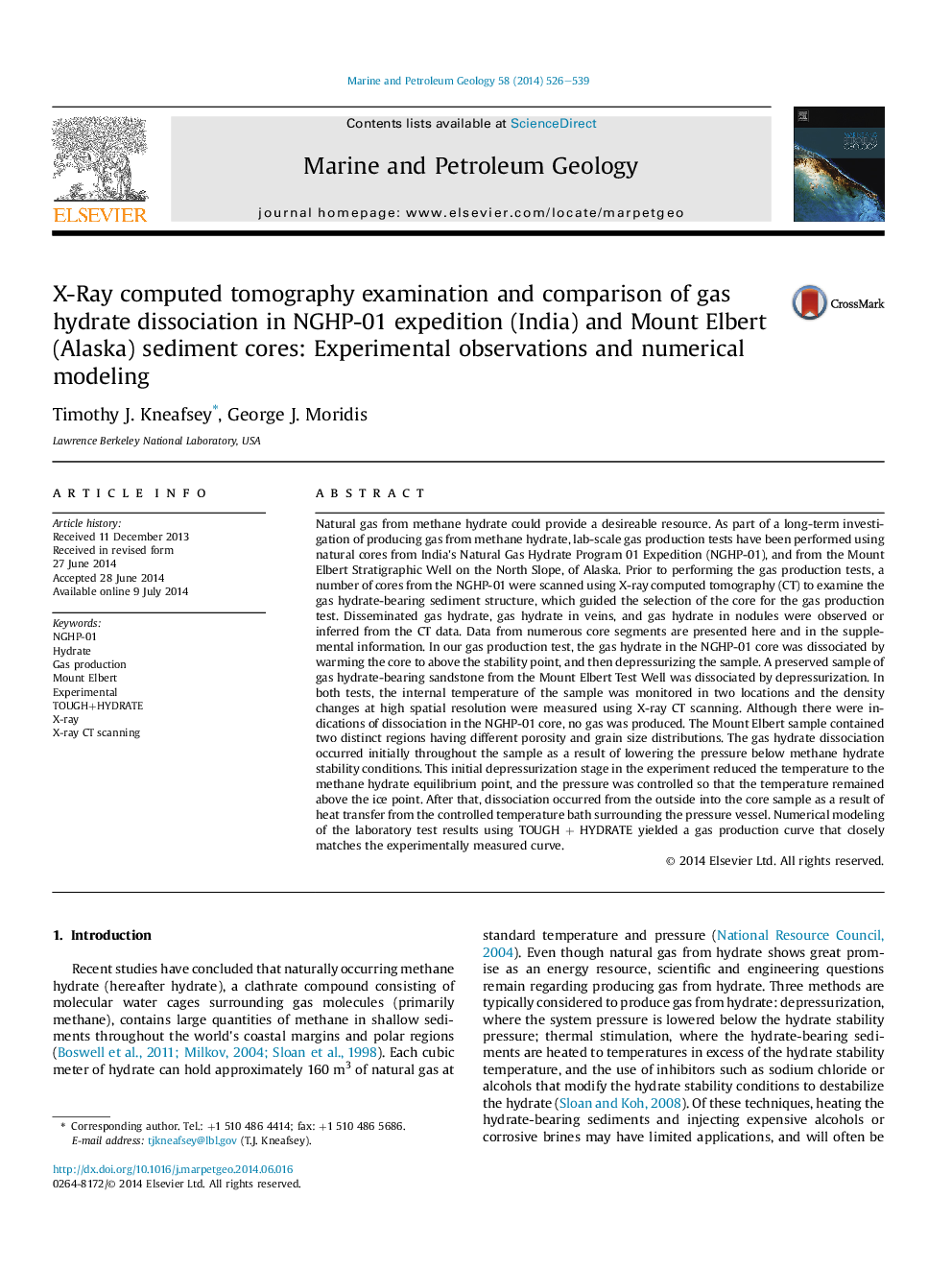| کد مقاله | کد نشریه | سال انتشار | مقاله انگلیسی | نسخه تمام متن |
|---|---|---|---|---|
| 6435260 | 1351619 | 2014 | 14 صفحه PDF | دانلود رایگان |

- X-ray computed tomography examination of 17 hydrate-bearing cores from NGHP-01.
- Gas production tests for NGHP-01 and Mount Elbert samples.
- Modeling using TOUGHÂ +Â Hydrate for Mount Elbert gas production test.
Natural gas from methane hydrate could provide a desireable resource. As part of a long-term investigation of producing gas from methane hydrate, lab-scale gas production tests have been performed using natural cores from India's Natural Gas Hydrate Program 01 Expedition (NGHP-01), and from the Mount Elbert Stratigraphic Well on the North Slope, of Alaska. Prior to performing the gas production tests, a number of cores from the NGHP-01 were scanned using X-ray computed tomography (CT) to examine the gas hydrate-bearing sediment structure, which guided the selection of the core for the gas production test. Disseminated gas hydrate, gas hydrate in veins, and gas hydrate in nodules were observed or inferred from the CT data. Data from numerous core segments are presented here and in the supplemental information. In our gas production test, the gas hydrate in the NGHP-01 core was dissociated by warming the core to above the stability point, and then depressurizing the sample. A preserved sample of gas hydrate-bearing sandstone from the Mount Elbert Test Well was dissociated by depressurization. In both tests, the internal temperature of the sample was monitored in two locations and the density changes at high spatial resolution were measured using X-ray CT scanning. Although there were indications of dissociation in the NGHP-01 core, no gas was produced. The Mount Elbert sample contained two distinct regions having different porosity and grain size distributions. The gas hydrate dissociation occurred initially throughout the sample as a result of lowering the pressure below methane hydrate stability conditions. This initial depressurization stage in the experiment reduced the temperature to the methane hydrate equilibrium point, and the pressure was controlled so that the temperature remained above the ice point. After that, dissociation occurred from the outside into the core sample as a result of heat transfer from the controlled temperature bath surrounding the pressure vessel. Numerical modeling of the laboratory test results using TOUGHÂ +Â HYDRATE yielded a gas production curve that closely matches the experimentally measured curve.
Low density (likely methane hydrate-filled) veins from NGHP-01 core, Measured and modeled gas production curves from Mount Elbert sample.160
Journal: Marine and Petroleum Geology - Volume 58, Part A, December 2014, Pages 526-539